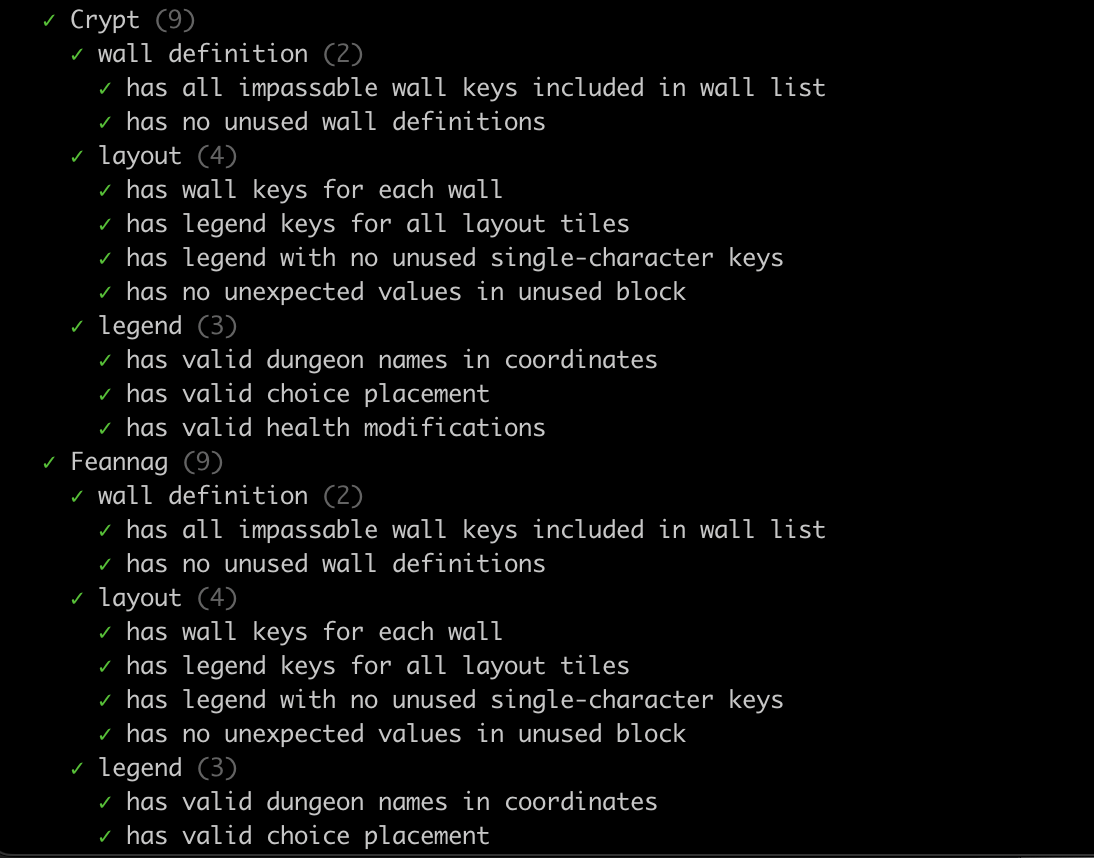Dark Days - A Role-Playing Adventure
Welcome!
Thank you for checking out my game! I've been working on it since February 2023 and it's been a lot of fun to build. At this time, I only have the basic mechanics of movement and interaction going. There's a lot more to do. But in this version of the game, enough is working to demonstrate what is possible.
I'd love feedback of all sorts - mechanics, gameplay, content, story, presentation. The look of course is not immersive in the same way that modern VR games are - but I'm striving for something different, and something less mass-marketed and mass-produced. This is a game by a person, for other people.
—Matt Borland
How to Play
You can find out the details of how to play in the Player's Guide.
Current Status
Right now, the game is in "pre-alpha demo testing"...in other words, it's just a demonstration of the kind of game I'm imagining. Its content is fairly shallow at the moment, but there is a single story line / quest that you can complete. That said, the game exudes the feel that I'm striving for.
I haven't tested this in a PC, but on my Mac it works great in Chrome and Firefox, and very well in Safari except for some occasional flicker rendering. Don't try to turn up the sound - there isn't any. :)
The Game's Goals
Dark Days is structurally a dungeon-crawler, with RPG and team-management aspects. What I want it to be about is:
- World exploration and emotional immersion
- RPG-style decisions having long-term consequences
- Subtly interesting NPCs (especially party characters)
- Old-fashioned dungeon crawling - testing the limits of your team
- The dynamics of managing your team's skills, etc.
- Simplicity in most mechanics (items, progression, skills, combat, etc.)
Technically, I aim to:
- Use basic CSS, etc. for all effects and 3D rendering
- Use server-driven model for updating state (lots of reasons)
- Use AI-driven imagery to provide rich visual components
- Perform state-signing to avoid client-side state tampering
The Making of Dark Days
It's fair to say that most programmers daydream about writing their own game, and after quite a long time working on other projects, I wanted to finally take a crack at writing the kind of game I'd like to play.
Dark Days is modeled after dungeon-crawlers of yore, but I'd like to inject a bit more of the "Role Play" aspect in that your decisions have more meaning to the overall trajectory than in many similar games.
The game is early in development and although I've worked out much of the interaction engine, I'm only just now getting the content and details put together. I'd love feedback on how the experience works for you.
This is a game I've written myself, and the AI-generated imagery is also copyrighted by me. I couldn't finance or quickly develop this game without AI imagery.
Although you can't tell by looking at it, the game could be expanded to be third-party contributed (or, AI-contributed...), since the static map files drive all the interactions.
Game Philosophy
I've been a game master for various role playing games for a large part of my life. In doing so, I've found that the experiences people cherish in ALL games are when:
- Players made a choice that had remarkable results
- There are numerous characters they become invested in (player characters and NPCs)
- Simple enough rules that players invest in the characters and situation, not the system
It's not the immersive realism that players respond to. With RPGs, they are often played with abstract tabletop props, or with no physical props at all ("theater of the mind"). The hazard of modern gaming is when we mistake the production values of the props as the core of the player experience.
Why isn't there a (minimap, quest log...)?
This game intentionally lacks some of the standard features that most games have these days. This is not lazy programming, but an intention to make a game more immersive and also encourage out-of-band / offline behaviors, like perhaps drawing your own maps of dungeons, or paying more close attention to - and perhaps writing notes about - interactions or experiences you've had. This is the same reason that I don't put most NPCs into a "repeat story" cycle, and don't always allow players to loop back and explore every conversation item with interactions. This forces the player to make at-the-moment decisions about what is important and focuses the experience.
Where I Want this to Go
I have lots of plans for the next steps of this game. Here is the 'short list' of things I expect to add:
- Limited Character Skills - e.g. Cartographer, Weapon Master, Thief, Commander. Each player only gets 2.
- Party Character Interludes - at specific points, your main character learns about the backgrounds of the others in the party - triggering new quests, etc.
- Significant content expansion
- Improved combat mechanics
- Magic system
- Basic items system
- Maybe have a starter template system, e.g. start as a farmer, or an aristocrat, with different pros and cons (think of the beginning of Oregon Trail)
Game Engine Mechanics
The game engine mechanics are quite simple overall. Almost all of the game interactions are created by a combination of base data (e.g. maps, characters, images), game state, triggers, and effects. The effects include data/state substitution, which provides most of the feeling of interactive change; and messaging and visual effects.
Programming

I'm enjoying this project because I love programming! It's programmed in Svelte / TypeScript and I'm using vitest for unit testing.
I'm using unit tests to ensure that the content is correct. The tests load the elements (map, characters, etc.) dynamically and subject them to a series of tests. These tests enforce consistency and rules that can't be otherwise checked.